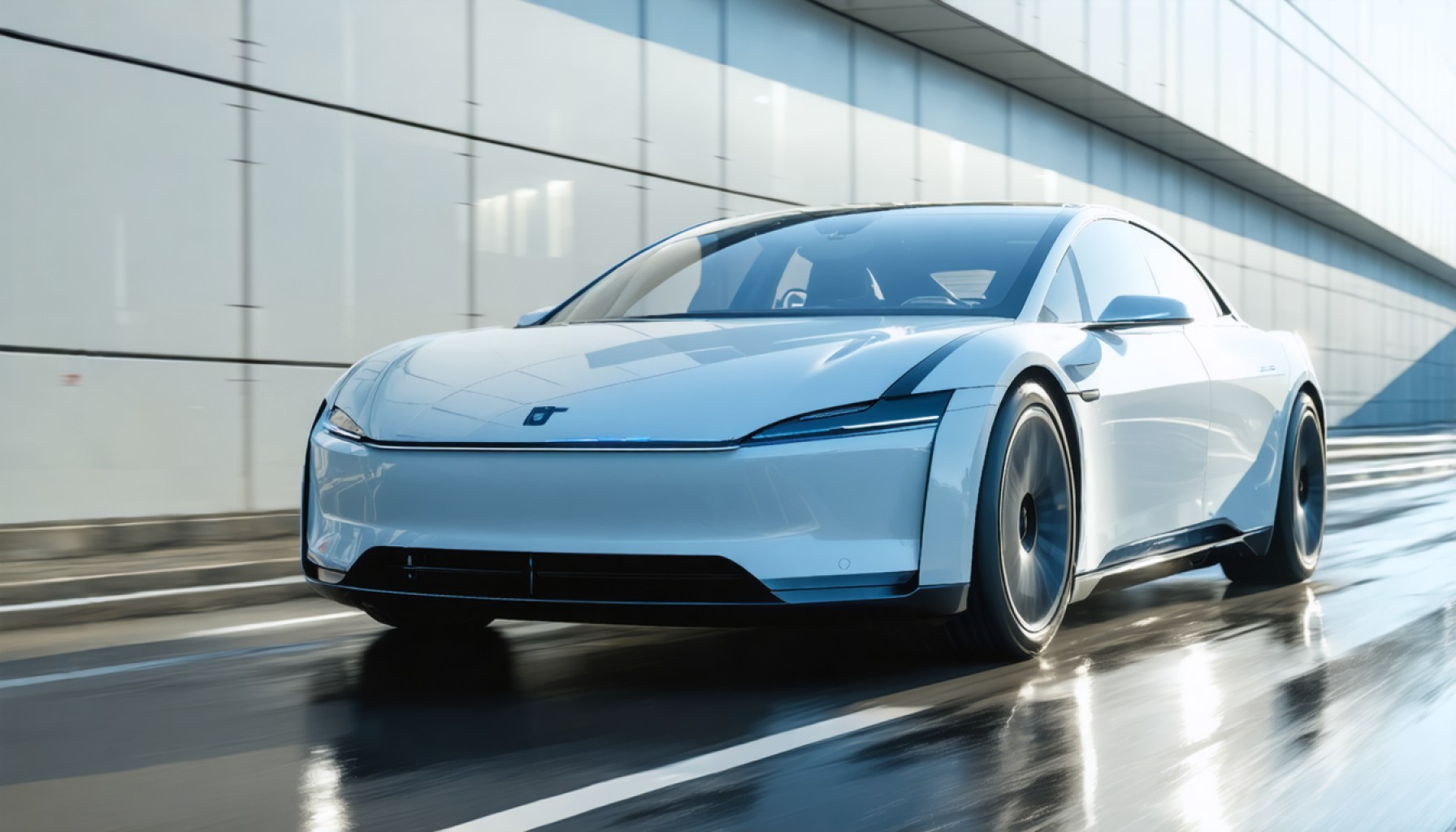- The EV battery pack cooling system market is projected to grow from $2.85 billion in 2023 to $8.09 billion by 2031, reflecting increasing demand.
- Efficient cooling systems are essential for optimal battery performance, preventing overheating and ensuring safety in electric vehicles.
- Leading companies like Boyd Corporation and Valeo are driving innovation with advanced air and liquid cooling solutions.
- Challenges include regulatory obstacles, lack of standardization, and high costs, especially with liquid cooling technologies.
- Government regulations and investments are propelling market growth, particularly in North America and Europe.
- Strategic alliances and infrastructural advancements, such as high-power charging hubs, are pivotal to sustainable transportation.
- Overall, the shift to EVs represents not just a technological advancement but a move towards a more sustainable future.
Beneath the sleek exteriors of electric vehicles (EVs), a quiet revolution is unfolding—a meticulous dance of temperature control ensuring the heartbeat of these modern chariots remains strong and steady. As global demands steer away from fossil-fuel engines, the EV battery pack cooling system market finds itself thrust into the spotlight, poised for exponential growth. This market, valued at a robust $2.85 billion in 2023, is expected to soar, reaching $8.09 billion by 2031.
But why this surge? The answer lies in the intricate balancing act that these cooling systems perform. They are the guardians of the battery’s optimal performance and longevity, tasked with preventing overheating and ensuring safety as they cradle the sophisticated technology within. As EVs grow more popular owing to their energy efficiency and reduced operational costs, the emphasis on advanced cooling solutions becomes paramount.
Innovation fuels this trajectory, with companies like Boyd Corporation and Valeo leading the charge. Their pursuit of cutting-edge technology addresses both technical and environmental challenges. From air cooling methods offering simplicity to the complex, fluidic dance of liquid cooling systems, each innovation whispers promises of enhanced performance and robust safety.
The challenges, however, loom as shadows over this bright horizon. Regulatory mazes confound emerging technologies, and the lack of standardization remains a stubborn hurdle. Costs still pose a threat, particularly with liquid cooling solutions, where sophisticated engineering demands drive prices skyward. Yet, amid these impediments, opportunity knocks louder.
Governments worldwide fortify this growth with regulations that champion clean energy, and hefty investments are pouring in to accelerate infrastructural advancements. North America, with its fervent push towards sustainable transportation, encapsulates the promise, while Europe stands as a bastion of regulatory support, fostering a robust ecosystem for EV technology proliferation.
As the market evolves, strategic alliances are becoming the norm. For instance, Dana Incorporated’s dive into electrification solutions exemplifies the strategic spirit driving collaboration across continents. Meanwhile, the establishment of high-power charging hubs underpins the silent propulsion towards a cleaner, more sustainable future.
The takeaway? The journey of EVs is not just about moving from point A to B; it’s a voyage into a future where vehicles not only tread lightly upon the earth but also revel in technological marvel. With innovation and resolve, the cool minds behind EV battery pack cooling systems are ensuring that our ride into tomorrow is both safe and exhilarating.
The Hidden Forces Driving the Future of EV Battery Cooling Systems
Understanding the Importance of EV Battery Cooling Systems
Electric vehicles (EVs) are revolutionizing the way we perceive transportation, offering an eco-friendly alternative to traditional combustion engines. Central to their operation is the efficiency and safety of the battery, the powerhouse of the vehicle. As demand for EVs grows, the focus has shifted predominantly to the cooling systems that ensure batteries operate within optimal temperature ranges, thereby prolonging their lifespan and enhancing performance.
Innovations in Cooling Technologies
1. Liquid Cooling Systems: Predominantly used in high-performance vehicles, these systems circulate a coolant over battery cells, providing excellent thermal management even in demanding conditions. Despite their higher cost, advances are being made to streamline production and reduce expenses over time.
2. Air Cooling Systems: Although simpler and cheaper, air-cooled solutions are less efficient in extreme conditions. Innovations are still underway to enhance their effectiveness in smaller EV models where space and cost are driving considerations.
3. Phase Change Materials (PCM): These materials absorb and release thermal energy during the phase transition, offering a promising approach to passive cooling. PCMs are particularly beneficial in balancing cost and performance, especially in hybrid systems.
4. Thermal Interface Materials (TIM): Increasingly, TIMs are being integrated into cooling systems to improve heat transfer between battery cells and cooling components. They are crucial for maintaining consistent cell temperatures across the battery pack.
Challenges and Market Dynamics
– Regulatory Challenges: As environmental regulations tighten and vehicle safety standards evolve, cooling system technologies must continuously adapt. This drives both innovation and complexity in designing regulatory-compliant solutions.
– Standardization Issues: The absence of global standardization for cooling technologies affects manufacturing efficiency and compatibility across different markets, posing a challenge that the industry must address collaboratively.
– Cost Considerations: While liquid cooling systems offer superior performance, their complexity and materials make them more expensive. However, market growth and innovation are likely to reduce these costs over time.
– Global Expansion: With regions like North America and Europe leading the charge with robust regulatory frameworks and infrastructure investments, other markets are rapidly catching up, propelling global industry growth.
Strategic Alliances and Collaborations
– Companies are increasingly entering strategic partnerships to share resources and expertise. For instance, collaborations like those between Dana Incorporated and key automotive manufacturers are shaping the future of electrification technologies.
Market Forecasts and Trends
– As the EV market expands, the battery pack cooling system market is projected to grow from $2.85 billion in 2023 to $8.09 billion by 2031. This growth trajectory will likely attract substantial investments and foster innovation.
Actionable Recommendations for Consumers and Investors
1. Adopt Latest Technology: As an EV buyer, consider models equipped with advanced cooling systems that ensure longevity and reliability.
2. Invest in Emerging Technologies: Investors should look towards companies innovating in cooling technologies, as they will be at the forefront of the EV revolution.
3. Stay Informed: Keep abreast of regulatory changes and technological advancements to better understand market dynamics and consumer options.
Future Outlook
The future of electric vehicles hinges on the advancements in battery cooling technologies. By integrating the latest innovations, the EV industry will not only achieve higher performance standards but also substantially contribute to global sustainability goals. For further reading on the latest in electric vehicle technologies, visit Tesla and BMW.
Quick Tips
– Performance Check: When considering an EV purchase, ask about the cooling system and its impact on battery life.
– Monitor Updates: Follow industry news for updates on new cooling technologies and system improvements.
– Engage with Communities: Participate in EV forums and user groups to learn from the experiences of other owners regarding battery performance and cooling efficiency.










